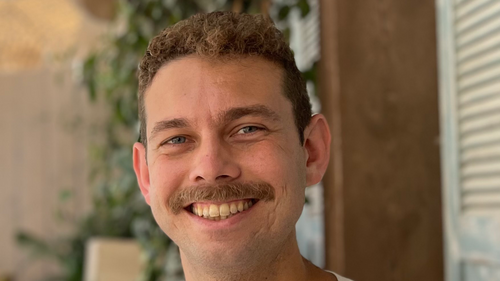
Yale Physics welcomes Max Silva-Feaver as the Yale Mossman Fellow for 2023. Silva-Feaver is a member of Yale’s Wright Lab, working with both assistant professor Laura Newburgh and professor Reina Maruyama in the the fields of cosmology and dark matter detection.
Silva-Feaver is a member of the Simons Observatory (SO) Cosmic Microwave Background (CMB) experiment, and the HAYSTAC and ALPHA axion direct-detection of dark matter experiments.
Silva-Feaver received his Ph.D. in physics from the University of California, San Diego (Prof. Kam Arnold, advisor) and his bachelor’s degree in physics from Santa Clara University. In between degrees, he worked on developing microwave multiplexing electronics for X-ray and CMB sensor applications and designing the DM-Radio pathfinder experiment as a research assistant for Prof. Kent Irwin at Stanford University.
For his Ph.D. research, Silva-Feaver designed, constructed, deployed, and tested the first SO Small Aperture Telescope (SAT). Within SO, he focused on camera readout electronics: the SLAC Microwave Radio Frequency (SMuRF) electronics, which were custom built to read out the superconducting microwave multiplexer cryogenic circuit capable of measuring ~1000 superconducting camera pixels on a single readout line. He led early testing and design iteration with the SLAC (DoE National Research Laboratory) team. He ultimately oversaw the system integration and operation at the SO high-elevation site in the Atacama Desert in Chile. He maintained the telescopes since their commissioning (Oct 2023). In 2022, he began working on the SO SAT data reduction and analysis pipeline utilizing simulation and North American lab data as a predoctoral research fellow at the Flatiron Institute. He continues this effort with the on-sky data in his position as a Yale Mossman Fellow.
Silva-Feaver has also joined the HAYSTAC and ALPHA axion direct detection experiments at Yale. He is upgrading HAYSTAC to extend its sensitivity to a 30-35 micro-electronvolt mass range and he is designing and testing the ALPHA microwave receiver system and integrating the ALPHA haloscope at Yale.
Silva-Feaver explained that he believes that developing room for young members to succeed in large science collaborations is as essential as individual university support. To this end, he has actively developed structural changes to improve graduate and postdoctoral researcher representation within the Simons Observatory and ALPHA projects. In his personal time, he enjoys traveling with his partner, reading fantasy novels, and getting outdoors for a run or hike.